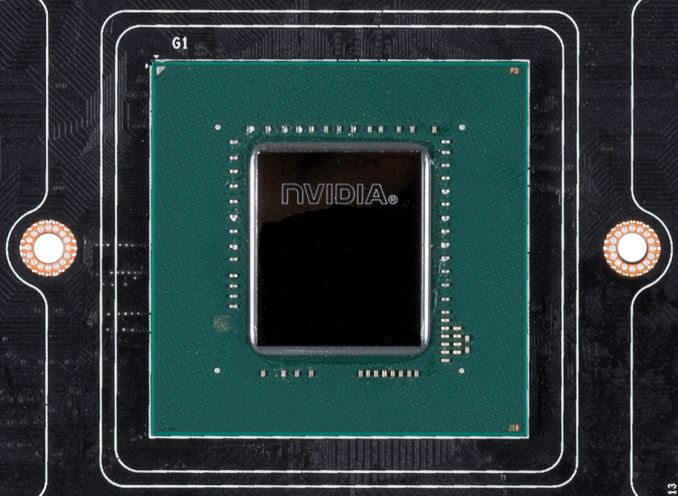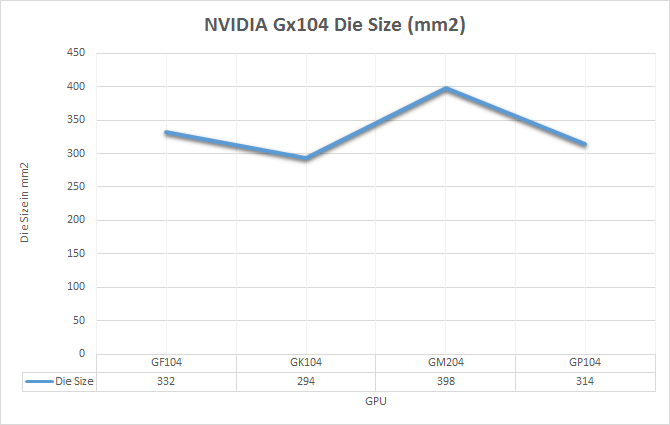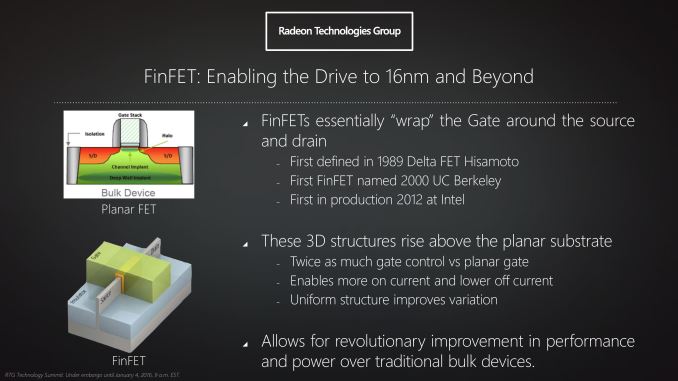The NVIDIA GeForce GTX 1080 & GTX 1070 Founders Editions Review: Kicking Off the FinFET Generation
by Ryan Smith on July 20, 2016 8:45 AM ESTGP104: The Heart of GTX 1080
At the heart of the GTX 1080 is the first of the consumer-focused Pascal GPUs, GP104. Though no two GPU generations are ever quite alike, GP104 follows a number of design cues established with the past couple 104 GPUs. Overall 104 GPUs have struck a balance between size and performance, allowing NVIDIA to get a suitably high yielding GPU out at the start of a generation, and to be followed up with larger GPUs later on as yields improve. With the exception of the GTX 780, 104 GPUs been the backbone of NVIDIA’s GTX 70 and 80 parts, and that is once again the case for the Pascal generation.
In terms of die size, GP104 comes in at 314mm2. This is right in NVIDIA’s traditional sweet spot for these designs, slotting in between the 294mm2 GK104 and the 332mm2 GF104. In terms of total transistors we’re looking at 7.2B transistors, up from 3.5B on GK104 and the 5.2B of the more unusual GM204. The significant increase in density comes from the use of TSMC’s 16nm FinFET process, which compared to 28nm combines a full node shrink, something that has been harder and harder to come by as the years have progressed.
Though the density improvement offered by TSMC’s 16nm process is of great importance to GP104’s overall performance, for once density takes a back seat to the properties of the process itself. I am of course speaking about the FinFET transistors, which are the headlining feature of TSMC’s process.
We’ve covered FinFET technology in depth before, so I won’t completely rehash it here. But in brief, FinFETs are an important development for chip fabrication as processes have gone below 28nm. As traditional, planar transistors have shrunk in feature size – and ultimately, the number of atoms they’re comprised of – electrical leakage has increased. With fewer atoms in a transistor, there are equally fewer atoms to control the flow of electrons.
FinFET in turn is a solution to this problem, essentially allowing fabs to turn back the clock on electrical leakage. By building transistors as three-dimensional objects with height as opposed to two-dimensional objects, giving FinFET transistors their characteristic fins in the process, FinFET technology greatly reduces the amount of energy a transistor leaks. In practice what this means is that FinFET technology not only reduces the total amount of energy wasted from leakage, but it also allows transistors to be operated at a much lower voltage, something we’ll see in depth with our analysis of GTX 1080.
FinFETs, or rather the lack thereof, are a big part of why we never saw GPUs built on TSMC’s 20nm process. It was TSMC’s initial belief that they could contain leakage well enough using traditional High-K Metal Gate (HKMG) technology on 20nm, a bet they ultimately lost. At 20nm, planar transistors were just too leaky to use for many applications, which is why ultimately we only saw SoCs on 20nm (and even then they were suboptimal). FinFETs, as it turns out, are absolutely necessary to get good performance out of transistors built on processes below 28nm.
And while it took TSMC some time to get there, now that they have the capability NVIDIA can reap the benefits. Not only can NVIDIA finally build a relatively massive chip like a GPU on a sub-28nm process, but thanks to the various beneficial properties of FinFETs, it allows them to take their designs in a different direction than what they could do on 28nm.













200 Comments
View All Comments
grrrgrrr - Wednesday, July 20, 2016 - link
Solid review! Some nice architecture introductions.euskalzabe - Wednesday, July 20, 2016 - link
The HDR discussion of this review was super interesting, but as always, there's one key piece of information missing: WHEN are we going to see HDR monitors that take advantage of these new GPU abilities?I myself am stuck at 1080p IPS because more resolution doesn't entice me, and there's nothing better than IPS. I'm waiting for HDR to buy my next monitor, but being 5 years old my Dell ST2220T is getting long in the teeth...
ajlueke - Wednesday, July 20, 2016 - link
Thanks for the review Ryan,I think the results are quite interesting, and the games chosen really help show the advantages and limitations of the different architectures. When you compare the GTX 1080 to its price predecessor, the 980 Ti, you are getting an almost universal ~25%-30% increase in performance.
Against rival AMDs R9 Fury X, there is more of a mixed bag. As the resolutions increase the bandwidth provided by the HBM memory on the Fury X really narrows the gap, sometimes trimming the margin to less that 10%,s specifically in games optimized more for DX12 "Hitman, "AotS". But it other games, specifically "Rise of the Tomb Raider" which boasts extremely high res textures, the 4Gb memory size on the Fury X starts to limit its performance in a big way. On average, there is again a ~25%-30% performance increase with much higher game to game variability.
This data lets a little bit of air out of the argument I hear a lot that AMD makes more "future proof" cards. While many Nvidia 900 series users may have to upgrade as more and more games switch to DX12 based programming. AMD Fury users will be in the same boat as those same games come with higher and higher res textures, due to the smaller amount of memory on board.
While Pascal still doesn't show the jump in DX12 versus DX11 that AMD's GPUs enjoy, it does at least show an increase or at least remain at parity.
So what you have is a card that wins in every single game tested, at every resolution over the price predecessors from both companies, all while consuming less power. That is a win pretty much any way you slice it. But there are elements of Nvidia’s strategy and the card I personally find disappointing.
I understand Nvidia wants to keep features specific to the higher margin professional cards, but avoiding HBM2 altogether in the consumer space seems to be a missed opportunity. I am a huge fan of the mini ITX gaming machines. And the Fury Nano, at the $450 price point is a great card. With an NVMe motherboard and NAS storage the need for drive bays in the case is eliminated, the Fury Nano at only 6” leads to some great forward thinking, and tiny designs. I was hoping to see an explosion of cases that cut out the need for supporting 10-11” cards and tons of drive bays if both Nvidia and AMD put out GPUs in the Nano space, but it seems not to be. HBM2 seems destined to remain on professional cards, as Nvidia won’t take the risk of adding it to a consumer Titan or GTX 1080 Ti card and potentially again cannibalize the higher margin professional card market. Now case makers don’t really have the same incentive to build smaller cases if the Fury Nano will still be the only card at that size. It’s just unfortunate that it had to happen because NVidia decided HBM2 was something they could slap on a pro card and sell for thousands extra.
But also what is also disappointing about Pascal stems from the GTX 1080 vs GTX 1070 data Ryan has shown. The GTX 1070 drops off far more than one would expect based off CUDA core numbers as the resolution increases. The GDDR5 memory versus the GDDR5X is probably at fault here, leading me to believe that Pascal can gain even further if the memory bandwidth is increased more, again with HBM2. So not only does the card limit you to the current mini-ITX monstrosities (I’m looking at you bulldog) by avoiding HBM2, it also very likely is costing us performance.
Now for the rank speculation. The data does present some interesting scenarios for the future. With the Fury X able to approach the GTX 1080 at high resolutions, most specifically in DX12 optimized games. It seems extremely likely that the Vega GPU will be able to surpass the GTX 1080, especially if the greatest limitation (4 Gb HBM) is removed with the supposed 8Gb of HBM2 and games move more and more the DX12. I imagine when it launches it will be the 4K card to get, as the Fury X already acquits itself very well there. For me personally, I will have to wait for the Vega Nano to realize my Mini-ITX dreams, unless of course, AMD doesn’t make another Nano edition card and the dream is dead. A possibility I dare not think about.
eddman - Wednesday, July 20, 2016 - link
The gap getting narrower at higher resolutions probably has more to do with chips' designs rather than bandwidth. After all, Fury is the big GCN chip optimized for high resolutions. Even though GP104 does well, it's still the middle Pascal chip.P.S. Please separate the paragraphs. It's a pain, reading your comment.
Eidigean - Wednesday, July 20, 2016 - link
The GTX 1070 is really just a way for Nvidia to sell GP104's that didn't pass all of their tests. Don't expect them to put expensive memory on a card where they're only looking to make their money back. Keeping the card cost down, hoping it sells, is more important to them.If there's a defect anywhere within one of the GPC's, the entire GPC is disabled and the chip is sold at a discount instead of being thrown out. I would not buy a 1070 which is really just a crippled 1080.
I'll be buying a 1080 for my 2560x1600 desktop, and an EVGA 1060 for my Mini-ITX build; which has a limited power supply.
mikael.skytter - Wednesday, July 20, 2016 - link
Thanks Ryan! Much appreciated.chrisp_6@yahoo.com - Wednesday, July 20, 2016 - link
Very good review. One minor comment to the article writers - do a final check on grammer - granted we are technical folks, but it was noticeable especially on the final words page.madwolfa - Wednesday, July 20, 2016 - link
It's "grammar", though. :)Eden-K121D - Thursday, July 21, 2016 - link
Oh the ironychrisp_6@yahoo.com - Thursday, July 21, 2016 - link
oh snap, that is some funny stuff right there